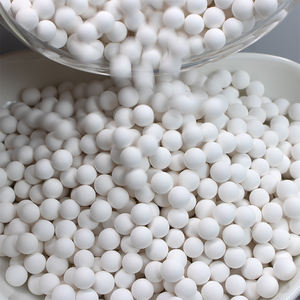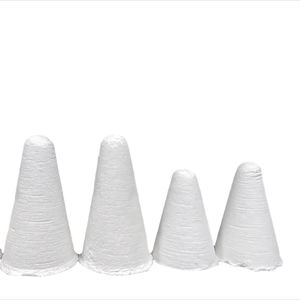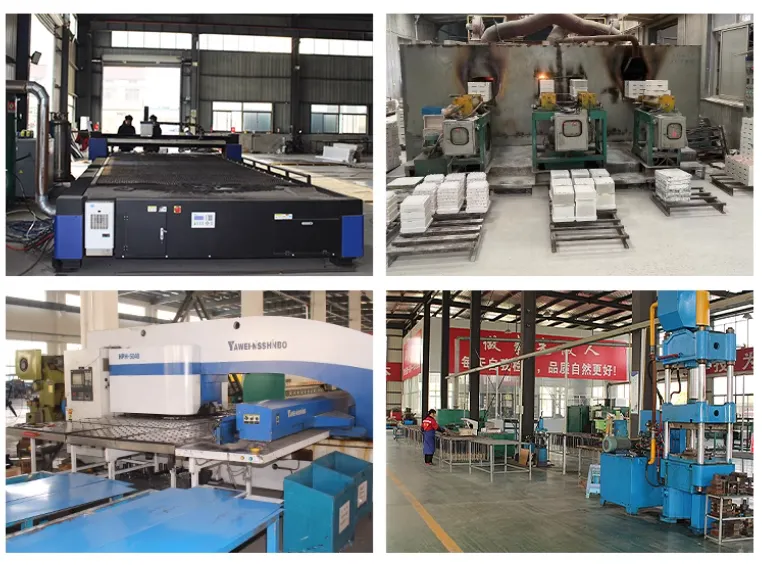Discover Premium Ceramic Products | Durability & Elegance United | Advanced Ceramics
1. Introduction
Just 24 hours ago, a major foundry in Ohio reported a production delay after multiple silicon carbide crucibles cracked during a routine melt cycle—highlighting how improper handling remains a top cause of failure in high-temperature applications. Whether you’re in metallurgy, ceramics, or lab research, knowing how to properly use and maintain your silicon carbide crucible can save time, money, and materials.

Silicon carbide crucibles are prized for their exceptional thermal conductivity, resistance to thermal shock, and ability to withstand temperatures over 1,600°C. But even the toughest silicon carbide ceramic components—like silicon carbide ceramic tiles, RBSiC silicon carbide tile blocks, or silicon carbide tubes—require careful handling to perform reliably.
2. Pre-Use Preparation
Before your first use, always inspect the silicon carbide crucible for hairline cracks, chips, or surface defects. Even minor damage can lead to catastrophic failure under heat.
New crucibles should be seasoned gradually. Place the empty crucible in a cold furnace and slowly ramp the temperature to 600–800°C over 2–3 hours. Hold for 30 minutes, then cool naturally. This burn-off removes binders and moisture that could cause spalling or explosion during rapid heating.
- Never place a cold crucible directly into a hot furnace.
- Avoid sudden temperature changes—silicon carbide is tough but not immune to thermal shock.
3. Correct Heating and Melting Practices
When melting metals or other materials, always heat the crucible uniformly. Use a furnace with even heat distribution rather than a direct flame unless the crucible is specifically rated for it (e.g., those used with silicon carbide burner nozzles).
Fill the crucible no more than 75% full to prevent overflow and reduce mechanical stress. Overfilling can also cause uneven heating, leading to cracks in the crucible wall or base.
If you’re comparing materials, note that boron carbide vs silicon carbide offers higher hardness but lower thermal conductivity—making silicon carbide the better choice for most crucible applications. Meanwhile, silicon nitride crucibles (often sourced from a silicon nitride crucible factory) excel in oxidation resistance but are costlier and less conductive.

4. Cleaning and Contamination Control
After use, allow the crucible to cool completely before cleaning. Never quench a hot silicon carbide crucible in water—this is a common mistake that causes immediate cracking.
Remove residue with a soft brush or non-metallic scraper. For stubborn deposits, use a mild acid wash (like diluted HCl) followed by thorough rinsing with deionized water. Avoid abrasive tools that can scratch the surface and create weak points.
Contamination is a silent killer. Even trace amounts of incompatible metals or oxides can react with the crucible lining. Always dedicate crucibles to specific materials—e.g., one for aluminum, another for copper alloys.
5. Storage and Long-Term Care
Store your silicon carbide crucible in a dry, dust-free environment. Moisture absorption can lead to steam pressure buildup during reheating, causing internal fractures.
Place it on a flat, stable surface—never stack heavy items on top. If you’re also using related components like silicon carbide ceramic columns, silicon carbide rings, or silicon carbide bricks, store them separately to avoid chipping.
For labs or small-scale users, note that some household-style items—like a silicon carbide ceramic baking dish or silicon carbide ceramic dinner plates—are made from similar materials but are NOT suitable for high-temp industrial use. Don’t confuse kitchenware with lab-grade crucibles.

6. Troubleshooting Common Problems
Cracking during heating? Likely due to too-rapid temperature rise or pre-existing damage. Always follow a controlled ramp rate.
Glazing or surface discoloration? This often indicates chemical reaction with the melt. Consider switching to a higher-purity silicon carbide or using a protective coating.
Reduced lifespan? Check your cooling cycle. Natural cooling is best. Forced air or water cooling drastically shortens service life.
If you’re working with extreme environments, consider alternatives like custom silicon nitride heat shields or silicon nitride plates, which offer superior oxidation resistance above 1,400°C—but at a higher cost and lower thermal conductivity than silicon carbide.
7. When to Replace Your Crucible
Even with perfect care, silicon carbide crucibles wear out. Replace yours if you notice:
- Deep pitting or erosion on the inner wall
- Visible cracks (even hairline)
- Warping or deformation
- Frequent contamination of melts
Don’t try to repair a damaged crucible—it’s a safety hazard. High-quality replacements are available as standard or custom items, including specialized forms like silicon carbide thermocouple protection tubes or silicon carbide porous ceramic tubes for filtration.
8. Conclusion
A silicon carbide crucible is a powerful tool—but only if treated with respect. By following proper preheating, handling, cleaning, and storage protocols, you’ll extend its life and ensure consistent, safe performance. Remember: whether you’re using industrial components like RBSiC tile blocks or exploring related ceramics like silicon nitride rings, material compatibility and thermal management are key. When in doubt, consult your supplier and prioritize gradual, controlled thermal cycles over speed.
Our Website founded on October 17, 2012, is a high-tech enterprise committed to the research and development, production, processing, sales and technical services of ceramic relative materials such as How. Our products includes but not limited to Boron Carbide Ceramic Products, Boron Nitride Ceramic Products, Silicon Carbide Ceramic Products, Silicon Nitride Ceramic Products, Zirconium Dioxide Ceramic Products, etc. If you are interested, please feel free to contact us.
